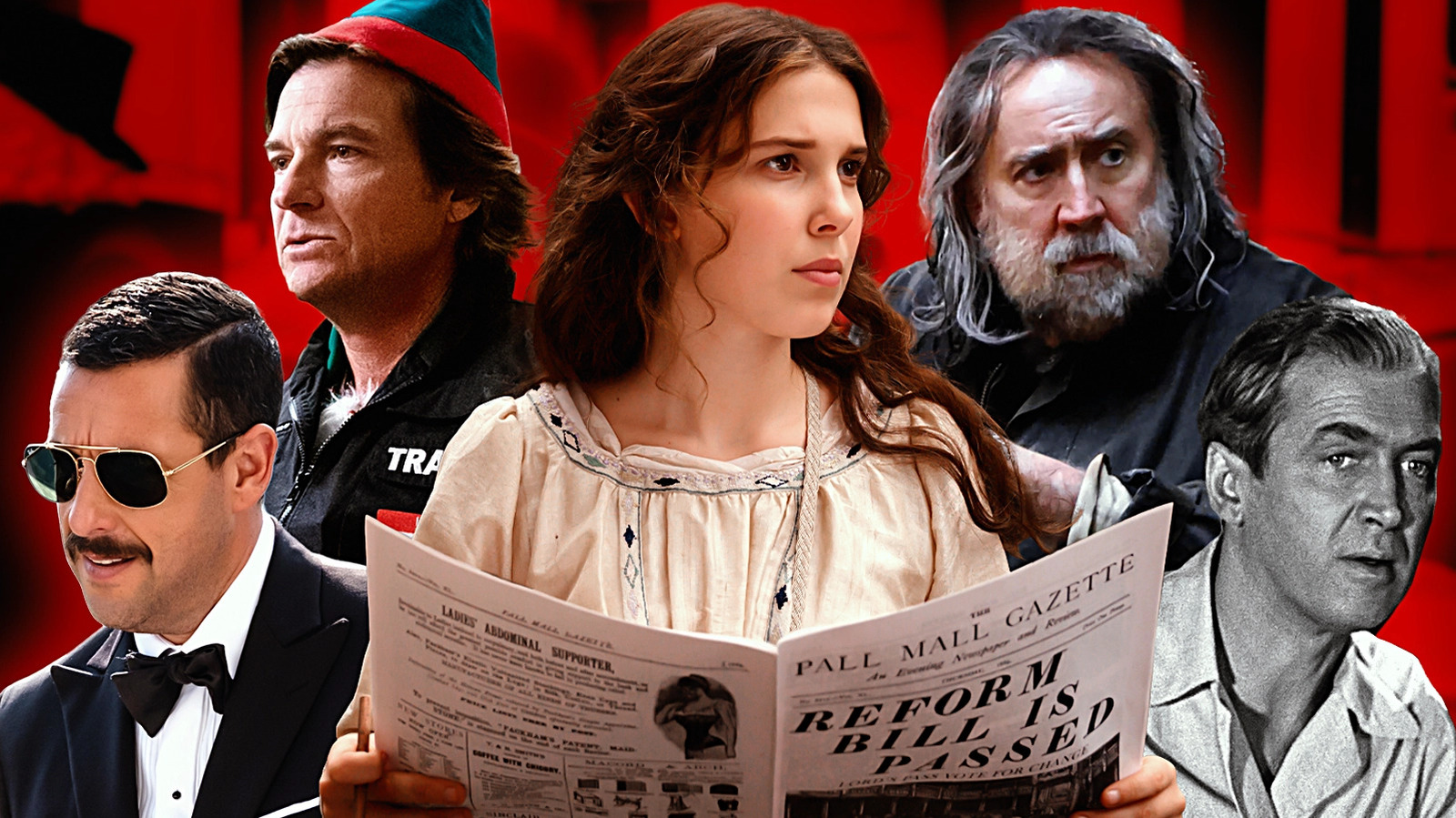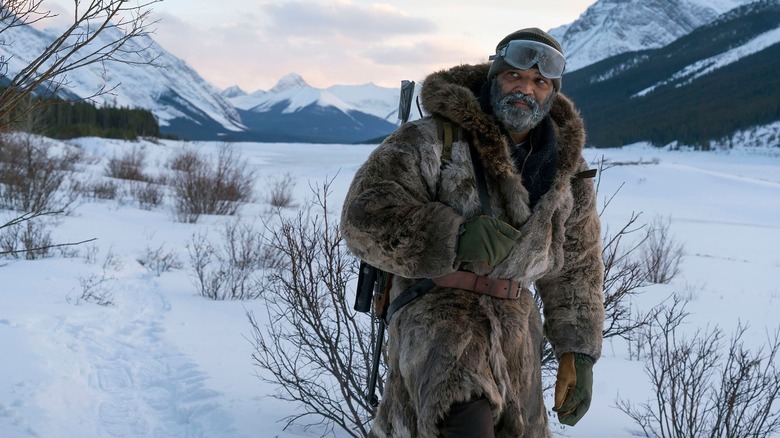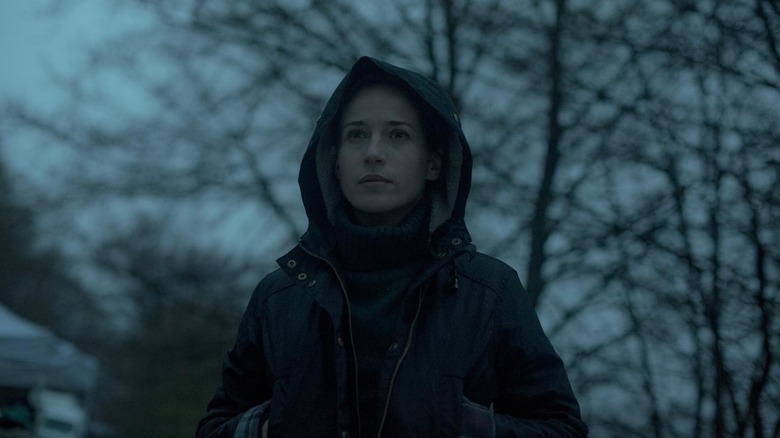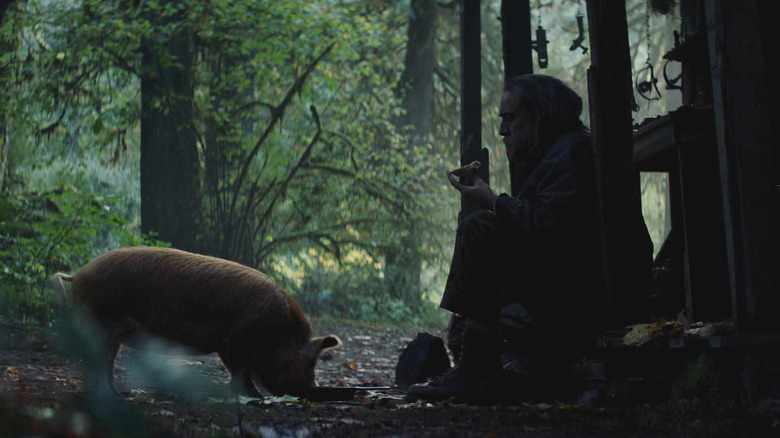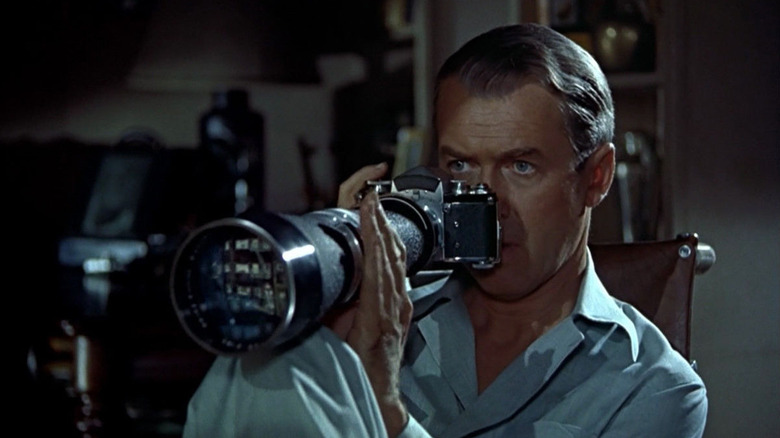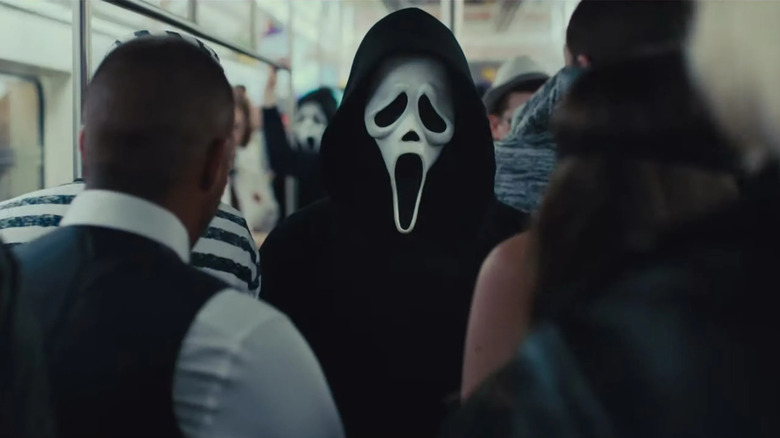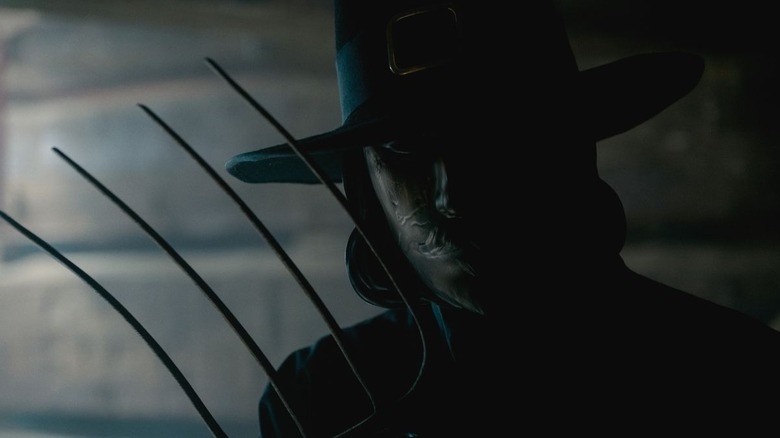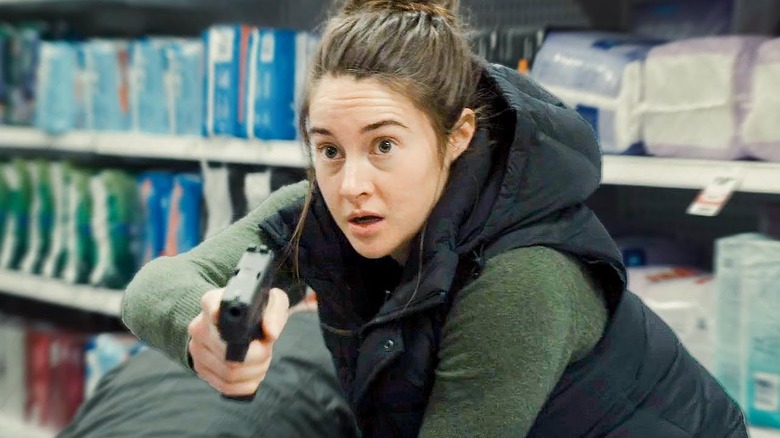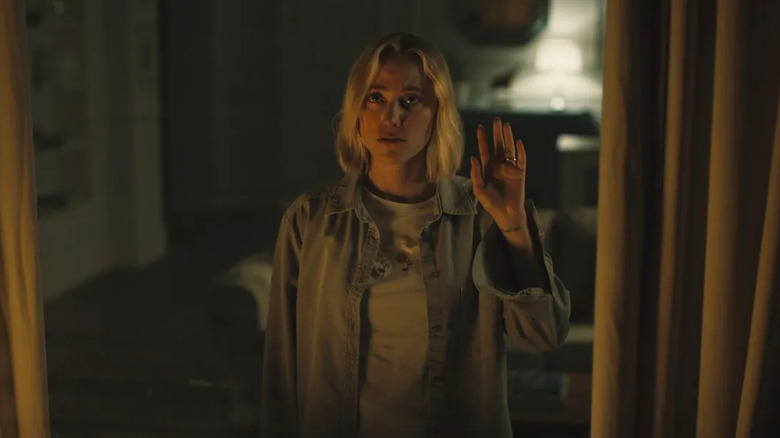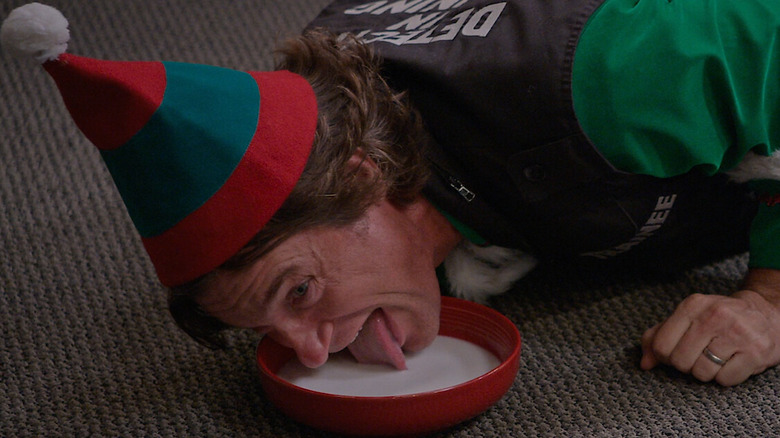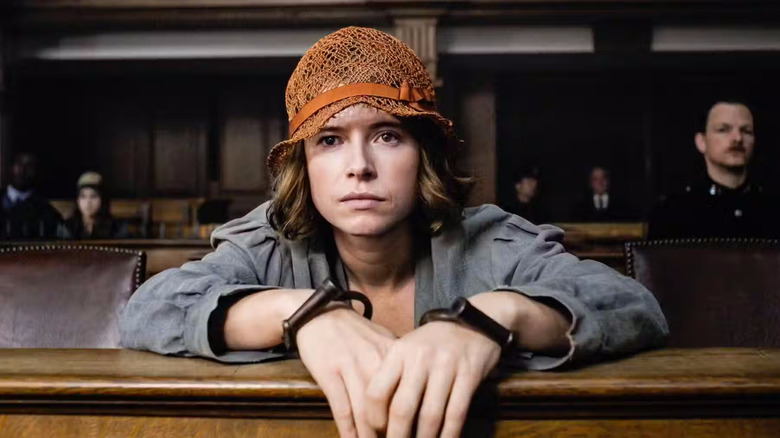being sued by the Doyle estate over the aforementioned public domain specifics). Netflix came to the rescue as the obvious fit for a new movie featuring their “Stranger Things” star, and it went on to be a big hit for the streamer. Unsurprisingly, it was followed by a sequel in 2022, and a third film is currently in production.
Hold the Dark
Pound for pound, square mile for square mile, Alaska is the easiest place in the United States to immerse yourself in — and feel immediately swallowed up by — the wonder, beauty, and uncaring world of nature. It’s an amazing, terrifying, and wholly unique place, and it serves genre films well as evidenced by Jeremy Saulnier’s “Hold the Dark” and our list of the best films set Alaska.
Jeffrey Wright arrives in rural Alaska to hunt down a pack of wolves blamed for some recent disappearances, but what he finds is a violence that feels much more human in its wanton cruelty. The man’s quest for the truth takes some incredibly dark turns as answers slowly come into view, and the film ultimately serves to lessen the line separating humans from other predatory species. It’s a grim reality, one slathered as much in madness as it is in premeditated intent, and it sees the film shift from asking who to asking why. The answers won’t be to everyone’s taste, but then again, you don’t always have the luxury of choosing what you want to eat.
The Invisible Guardian
Amaia Salazar returns to her small hometown in Northern Spain as a police detective after working in the U.S. as an F.B.I. agent, and her skills are put to the test when she discovers a serial killer is killing young women. It’s a mystery as to who the killer is, but while that’s to be expected, “The Invisible Guardian” throws a wrench into the mix as some locals come to count a local bigfoot-like legend called the basajaun among the suspects. To be clear, this is far from a bigfoot movie, but that thread adds something interesting to the story.
The first in a trilogy — the two sequels, “The Legacy of Bones” and “Offering to the Storm” are also available on Netflix — the film sets a moody tone with its dark deeds both past and present and cinematography that embraces the region’s darkly wooded landscape. It’s a slow burn that winds its way to a satisfying reveal and conclusion while still leaving threads for the later films, and Marta Etura is terrific as the intelligent, determined detective haunted by her own traumas.
Murder Mystery
Adam Sandler’s production deal with Netflix may have started off rough with the likes of “The Ridiculous 6” and “The Do-Over,” but over time its actually resulted in some better-than-expected films as evidenced by our Sandler-Netflix film ranking. “Murder Mystery” is one of those surprisingly good entries that finds laughs and minor thrills in its riff on true classics like “The Thin Man” franchise. The film stars Sandler and Jennifer Aniston, reuniting after 2011’s “Just Go with It,” as a married couple whose long-anticipated European vacation hits a snag when they get caught up in a murder mystery.
The duo has a fun, natural chemistry that comes to the forefront here as they share laughs and throw zings back and forth, all of it punctuated with minor squabbles and investigative antics. They trip their way into as many clues as they find naturally, but it still feels like they’re working together to catch a killer and having a blast in the process. Luke Evans, Gemma Arterton, and Terence Stamp are along for the ride, and it’s written by James Vanderbilt whose eclectic filmography ranges from the lows of “Independence Day: Resurgence” to the highs of “Zodiac.”
The Pale Blue Eye
Arthur Conan Doyle may have taken the idea and run with it decades later, but it’s Edgar Allan Poe who essentially invented the detective story as we’ve come to know it with the 1841 publication of “The Murders in the Rue Morgue.” Two very different films have explored the idea of Poe himself investigating a murder mystery — 2012’s “The Raven” was the first, but it’s Scott Cooper’s “The Pale Blue Eye” that’s currently streaming on Netflix.
Christian Bale stars as an investigator pulled out of retirement to solve the murder of an army cadet, and he in turn recruits another young cadet named Poe (Harry Melling) to assist him on the case. The two form a compelling team, and as more bodies are discovered, their search for the truth leads to grim discoveries and ritualistic horrors. It’s a suspenseful watch, and while the ending seems destined to lose some viewers (even as it earns respect for the grueling nature of the final scene’s production), it’s an effectively dark and satisfying observation on the two men. Melling is effectively quirky as Poe, while Bale captivates as a man on a mission.
Pig
A recluse lives alone in the woods with his pet pig, but when the animal is stolen, the man heads to the big city to get her back. Swap the pig with an elephant, and you’d have the plot of 2005’s action film, “The Protector,” starring a young Tony Jaa, but leave it as is, and “Pig” is a sad, engaging, mystery drama starring Nicolas Cage as a man coming to grips with loss. The mystery element sees Cage’s ex-chef reconnect with people he once knew in Portland’s restaurant scene, from fellow cooks to participants in an underground restaurant-worker fight club, but don’t go in expecting the resolution to bring the expected catharsis.
Writer and director Michael Sarnoski crafts a simple mystery in service of something more profound, and the result is a sad but affecting film that refuses to cater to genre desires. Instead, it’s content letting its characters sit in the moment, evaluating truths both newly learned and lifetime earned, as they face the difficulty of saying goodbye. Approach it as a character piece headlined by a truly affecting performance by Nicolas Cage (powered in part by his fear of losing his own cat), and that final goodbye might not land so painfully.
Rear Window
While Netflix is known for its lack of older films among its offerings — there’s typically no more than a handful of titles released prior to the 1980s — the streamer is currently hosting seven films from the master of suspense, Alfred Hitchcock. Nestled among the thrills of “Frenzy” and the horrors of “The Birds,” Hitchcock’s “Rear Window” delivers an all-timer mystery and a premise that’s been aped by everyone from Shia LaBeouf (“Disturbing Behavior”) to bigfoot (“Abominable”).
James Stewart plays a man confined to his high-rise apartment while he recuperates in a wheelchair. He keeps busy by spying on neighbors with his binoculars, and it’s then that he witnesses what he believes is a murder most foul — but he’s going to have a hard time proving it. Hitchcock milks the suspense here teasing the possibility that all is innocent even if we know it’s not, and the mystery becomes more complicated and more dangerous as it goes. It’s a seventy-year-old film, but its thrills still land from start to finish ensuring it’s still relevant today.
Scream VI
Slasher films, and their Italian cousin, the giallo, are frequently mysteries at their very core. Sure, some of the heavy hitters like “Halloween” and the “Friday the 13th” sequels feature a known, recurring killer, but most entries in the subgenre inject their thrills with a whodunnit element that’s usually not answered until the very end. The “Scream” films have had a lot of fun with the idea resulting in some surprising reveals over the years, and while “Scream VI” is a bit more obvious on that front, it’s still a terrifically entertaining slasher mystery getting there.
Part of its success stems from the move from Woodsboro to New York City as original franchise characters and newcomers alike come together to square off against a new Ghostface spilling blood throughout the city’s streets. Gory kills and fun laughs share the screen with some twisty surprises making it one of the better sequels as the new cast (the newbies who survived the 2022 sequel/reboot) finds their footing alongside the veterans, and it’s a legit shame that Jenna Ortega and Melissa Barrera won’t be returning for “Scream VII.”
Thanksgiving
Eli Roth’s “Thanksgiving” is most typically labeled as a holiday slasher, but like the “Scream” sequel above, the whodunnit aspect of the killings is a major part of the film’s structure and success. A feature-length adaptation of Roth’s own faux-trailer from 2007’s “Grindhouse,” the film sets a killer loose in a small town celebrating its pilgrim-related history in the lead-up to the holiday. Someone dressed like the town’s favorite son, a founding pilgrim named John Carver, is living up to his name and slicing and dicing his way through the town’s population.
While Roth is best known for harder horror entries like the “Hostel” franchise and “The Green Inferno,” this movie appeals to a broader audience with laughs and smart writing while still delivering the gory goods. The kills here are creative, and Jeff Rendell’s script does a fun job misdirecting audiences as to the killer’s identity making for a film that fits the “Scream” mold fairly well. Genre fans love holiday horrors, so here’s hoping the recently greenlit sequel actually moves forward.
To Catch a Killer
It’s New Year’s Eve, and a fireworks celebration conceals the chaos and horror of a mass shooting. Someone guns down dozens of people from afar, and while the F.B.I. takes control of the case, the lead agent (Ben Mendelsohn) recruits a local police officer (Shailene Woodley) to assist after hearing her theories on the case. While some thrillers lean heavily into stylish visuals and twisted minds, “To Catch a Killer” takes a more methodical approach giving it something of a procedural feel. That’s not a knock as it means more time spent with Woodley and Mendelsohn, both of whom deliver engaging turns as dogged investigators.
The pair follow a jagged trail of clues leading to suspense, conflict, and false hope, and all of it takes hold thanks to both performances and director Damian Szifron’s matter-of-fact approach. The violent scenes follow that lead resulting it set pieces that genuinely thrill and disturb in equal measure. Mass shootings are a horrifying reality, and while far from sensationalized here, the sequences find real impact in their immediacy and add fuel to the desire for the killer to be found.
Vertigo
The second of two Alfred Hitchcock mysteries to make this list is a different kind of beast from the light, suspenseful thrills of “Rear Window.” James Stewart takes the lead again in “Vertigo,” but here he’s a man haunted by his own desires. He leaves a loving woman behind for the mysterious blond who catches his eye and his heart, but before he can truly get to know her, she’ dies in front of him. It’s not long before he meets someone else who resembles the dead woman in enough ways to rekindle his obsession.
One woman seemingly possessed by a long-dead relative, another who appears to be a doppelganger of the recently deceased, and a man unable to see past his infatuation for them both — the mystery behind it all can sometimes play second fiddle to the psychological drama playing out around San Francisco, but it remains a compelling undercurrent throughout. It’s a clash between artifice and truth, surface affection and true love, and the final revelations will bring it all crashing down to earth. Hitchcock’s at his showiest here, and it all pairs beautifully with the mental unraveling.
Watcher
Chloe Okuno’s “Watcher” takes an atypical approach to its mystery by threading together a couple different storylines that may or may not intersect. Maika Monroe plays a young woman who moves to Bucharest with her husband only to discover a man prone to watching her each day from an apartment across the street. Also? A serial killer is stalking the city’s streets. The film lets the latter thread infuse Monroe’s character with added fear over what she’s experiencing, and that paranoia builds beautifully leaving viewers unsure where the real threat rests resulting in one of 2022’s best thrillers.
Monroe has quickly become a genre favorite with films like “It Follows” and “Longlegs” to her name, and she gives a haunted but spunky performance here as a woman who finds herself while looking for answers about the creep across the street. Okuno builds genuine suspense as the pieces come together, and it all comes together for a third act that tests our certainty as to who’s going live until the end credits roll. It’s a slow burn mystery, but when the thrills kick in, you’ll be glad you’re only watching it and not living it.
Who Killed Santa? A Murderville Mystery
“Who Killed Santa? A Murderville Mystery” runs shy of feature length at just under an hour, but it’s still a fun and worthy mystery. The premise of the seven-episode series sees a homicide detective played by Will Arnett tasked with solving a murder while saddled with a new rookie. Each episode is a new murder mystery, and everyone has the script — except for the guest star playing the rookie. What follows is improvisational gold as the likes of Conan O’Brien, Kumail Nanjiani, Maya Rudolph, and more try to stumble and fumble their way to correctly accusing the killer while Arnett does his best to keep them laughing.
This episode is a special one at nearly twice the running time, and it stars Jason Bateman as the guest rookie trying to solve the mystery of who killed Santa (Sean Hayes). Beyond the obvious fun of watching comic geniuses at work and play, the mystery itself is a fun time for viewers to try and solve as well. All the clues are on the screen or in dialogue exchanges making for a sometimes challenging good time for armchair detectives.
Wicked Little Letters
While many of the mysteries on this list are weighed down by dead bodies and devious killers, “Wicked Little Letters” is in pursuit of a far less dangerous culprit. It seems someone is sending profanity-laced letters to a Christian spinster (Olivia Colman), and her uptight father (Timothy Spall) is furious. Blame falls on a young widow (Jessie Buckley) known for her foul mouth and unladylike ways, but is she actually guilty?
Based loosely on real events from 1920s England, the film explores misogyny and the societal pressures put on women by both loved ones and strangers alike. It avoids feeling heavy handed, though, through a combination of sharp writing, playful performances, and the frequency of its very funny, very creative profanities made even more enjoyable to the ears by hearing the likes of Colman and Spall give them life. It’s a wonderfully foul good time even after the mystery element is resolved halfway through by the town’s increasingly concerned women, and Colman and Buckley lead a strong, appealing cast of female performers.

